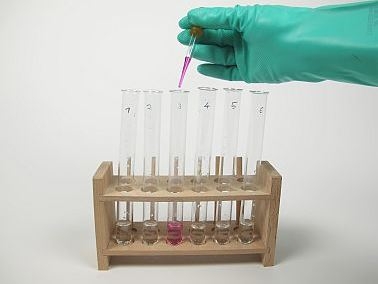Test the reactivity of heptane and liquid paraffin.The bond energy for C-C bonds (348 kJ mol-1) and C-H bonds (413 kJ mol-1) is relatively high for non-polar bonds (for comparison, Br-Br: 193 kJ mol-1). They are therefore difficult to attack. In addition, by reason of the low polarity, there is no appropriate target for an electrophilic or for a nucleophilic attack. Only very energy-rich radicals can react with alkanes under normal conditions.
The test with potassium permanganate serves here already as an introduction to double bonds (Baeyer test).
Learning objectives
- Alkanes are very unreactive. They do not react even with strong acids or oxidizing agents.´
- The low reactivity of the alkanes results from the non-polar, and therefore hardly attackable, single bonds.
Benefits
- Easy teaching and efficient learning by using interactive experimentation PHYWE-Software
- Experiment is part of a complete solution set with experiments for the topic Organic Chemistry matched with international curriculum: all topics are covered



